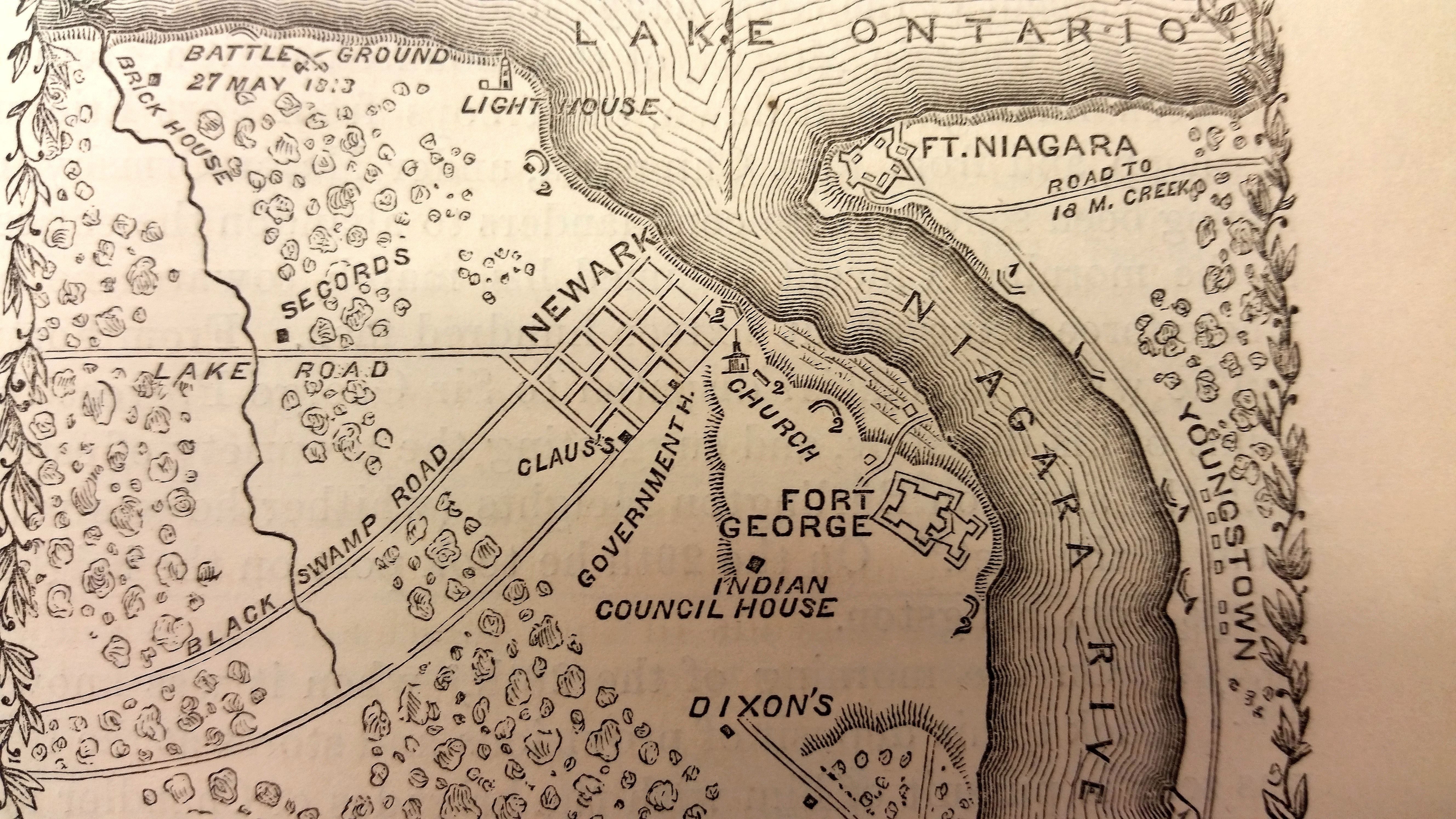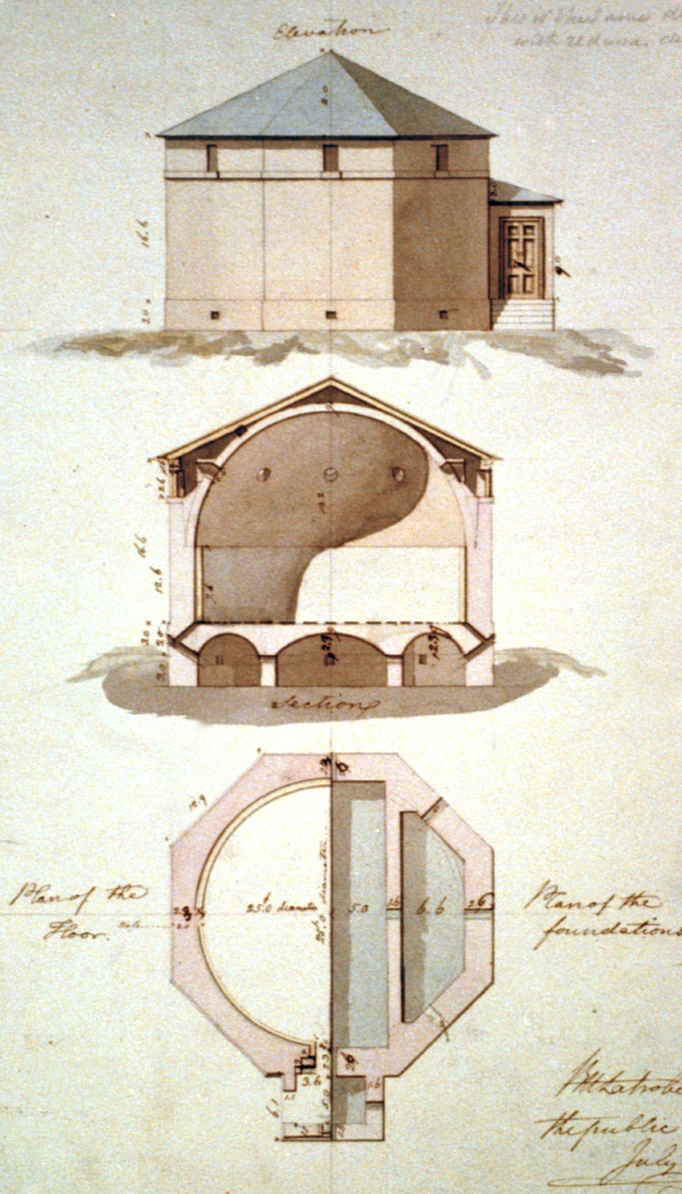|
Fort George, Ontario
Fort George was a military fortification in Niagara-on-the-Lake, Ontario, Canada. The fort was used by the British Army, the Canadian militia, and the Jeffersonian democracy, Jeffersonian American Republic United States Army, Army for a brief period. The fort was mostly destroyed during the War of 1812. The site of the fort has been a National Historic Sites of Canada, National Historic Site of Canada since 1921, and features a reconstruction of Fort George. The British established Fort George in the 1790s to replace Fort Niagara. Many of its structures were demolished in May 1813, during the Battle of Fort George. After the battle, American forces occupied the fort for seven months before withdrawing in December 1813. Although the British regained the fort shortly afterwards, little effort was put into its reconstruction after they capture of Fort Niagara, captured Fort Niagara the following week. The poor wartime design of Fort George led to its replacement by Fort Mississauga ... [...More Info...] [...Related Items...] OR: [Wikipedia] [Google] [Baidu] |
Niagara-on-the-Lake
Niagara-on-the-Lake is a town in Ontario, Canada. It is located on the Niagara Peninsula at the point where the Niagara River meets Lake Ontario, across the river from New York (state), New York, United States. Niagara-on-the-Lake is in the Regional Municipality of Niagara, Niagara Region of Ontario and is the only town in Canada that has a lord mayor."Oh, Lordy!; Niagara-on-the-Lake's mayor is the only one in Canada referred to as 'lord,' but as reporter Monique Beech discovered, the title's official status isn't clear" . ''St ... [...More Info...] [...Related Items...] OR: [Wikipedia] [Google] [Baidu] |
Bastion
A bastion is a structure projecting outward from the curtain wall of a fortification, most commonly angular in shape and positioned at the corners of the fort. The fully developed bastion consists of two faces and two flanks, with fire from the flanks being able to protect the curtain wall and the adjacent bastions. Compared with the medieval fortified towers they replaced, bastion fortifications offered a greater degree of passive resistance and more scope for ranged defence in the age of gunpowder artillery. As military architecture, the bastion is one element in the style of fortification dominant from the mid 16th to mid 19th centuries. Evolution By the middle of the 15th century, artillery pieces had become powerful enough to make the traditional medieval round tower and curtain wall obsolete. This was exemplified by the campaigns of Charles VII of France who reduced the towns and castles held by the English during the latter stages of the Hundred Years War, and by th ... [...More Info...] [...Related Items...] OR: [Wikipedia] [Google] [Baidu] |
Isaac Brock
Major-General Sir Isaac Brock KB (6 October 1769 – 13 October 1812) was a British Army officer and colonial administrator from Guernsey. He is best remembered for his victory at the Siege of Detroit and his death at the Battle of Queenston Heights during the War of 1812. Brock joined the army as a ensign in 1785. By 1797, he was a lieutenant colonel with the 49th Regiment of Foot. The regiment participated in the Anglo-Russian invasion of Holland in 1799 and in the 1801 naval expedition against Copenhagen. In 1802, the 49th Regiment was assigned to garrison duty in British North America. Despite facing desertions and near-mutinies, Brock successfully commanded his regiment in Upper Canada (part of present-day Ontario) for several years. He was promoted to colonel in 1805 and appointed brigadier general in 1808. In 1811 he was promoted to major general and given responsibility for defending Upper Canada against the threat of an American invasion. While many in Canad ... [...More Info...] [...Related Items...] OR: [Wikipedia] [Google] [Baidu] |
Indian Department
The Indian Department was established in 1755 to oversee relations between the British Empire and the First Nations of North America. The imperial government ceded control of the Indian Department to the Province of Canada in 1860, thus setting the stage for the development of the present-day Department of Crown–Indigenous Relations and Northern Affairs Canada. During its existence, the Indian Department served both a diplomatic and a military role. Its daily responsibilities were largely civil in nature, such as the administration of justice, the management of the fur trade, and the employment of blacksmiths, teachers, and missionaries. At the same time, the Department was expected to mobilize and lead Indigenous warriors in times of crisis and conflict. Theoretically, control over the Indian Department rested with the senior-most administrator in British America, initially the Commander-in-Chief of the British forces in North America, and later the Governor General of the ... [...More Info...] [...Related Items...] OR: [Wikipedia] [Google] [Baidu] |
Palisade
A palisade, sometimes called a stakewall or a paling, is typically a row of closely placed, high vertical standing tree trunks or wooden or iron stakes used as a fence for enclosure or as a defensive wall. Palisades can form a stockade. Etymology ''Palisade'' derives from ''pale'', from the Latin word ', meaning stake, specifically when used side by side to create a wood defensive wall. In turn, ''pālus'' derives from the Old Italic word ''palūts'', which may possibly derive from the Proto-Indo-European word ''pelh'', meaning pale or gray. It may be related to the Proto-Uralic word ''pil'me'' (uncertain meaning) or the word ''pilwe'', meaning cloud. (see wikt:pale#Etymology_2, 'pale', English: Etymology 2 on Wiktionary). Typical construction Typical construction consisted of small or mid-sized tree trunks aligned vertically, with as little free space in between as possible. The trunks were sharpened or pointed at the top, and were driven into the ground and sometimes rein ... [...More Info...] [...Related Items...] OR: [Wikipedia] [Google] [Baidu] |
Upper Canada
The Province of Upper Canada () was a Province, part of The Canadas, British Canada established in 1791 by the Kingdom of Great Britain, to govern the central third of the lands in British North America, formerly part of the Province of Quebec (1763–1791), Province of Quebec since 1763. Upper Canada included all of modern-day Southern Ontario and all those areas of Northern Ontario in the which had formed part of New France, essentially the watersheds of the Ottawa River or Lakes Lake Huron, Huron and Lake Superior, Superior, excluding any lands within the watershed of Hudson Bay. The "upper" prefix in the name reflects its geographic position along the Great Lakes, mostly above the headwaters of the Saint Lawrence River, contrasted with Lower Canada (present-day Quebec) to the northeast. Upper Canada was the primary destination of Loyalist (American Revolution), Loyalist refugees and settlers from the United States after the American Revolution, who often were granted la ... [...More Info...] [...Related Items...] OR: [Wikipedia] [Google] [Baidu] |
Royal Canadian Volunteers
Royal may refer to: People * Royal (name), a list of people with either the surname or given name * A member of a royal family or royalty Places United States * Royal, Arkansas, an unincorporated community * Royal, Illinois, a village * Royal, Iowa, a city * Royal, Missouri, an unincorporated community * Royal, Nebraska, a village * Royal, Franklin County, North Carolina, an unincorporated area * Royal, Utah, a ghost town * Royal, West Virginia, an unincorporated community * Royal Gorge, on the Arkansas River in Colorado * Royal Township (other) Elsewhere * Mount Royal, a hill in Montreal, Canada * Royal Canal, Dublin, Ireland * Royal National Park, New South Wales, Australia Arts, entertainment, and media * ''Royal'' (Jesse Royal album), 2021 * Royal (Ayo album), 2020 * ''The Royal'', a British medical drama television series * '' The Royal Magazine'', a monthly British literary magazine published between 1898 and 1939 * '' The Raja Saab'', working title ''Roya ... [...More Info...] [...Related Items...] OR: [Wikipedia] [Google] [Baidu] |
Gunpowder Magazine
A gunpowder magazine is a magazine (building) designed to store the explosive gunpowder in wooden barrels for safety. Gunpowder, until superseded, was a universal explosive used in the military and for civil engineering: both applications required storage magazines. Most magazines were purely functional and tended to be in remote and secure locations. They are the successor to the earlier powder towers and powder houses. In Australia Historic magazines were at the following locations, among others: * Jack's Magazine, Saltwater River, Victoria * Goat Island, Sydney * Spectacle Island (Port Jackson) * North Arm Powder Magazine * Dry Creek explosives depot In Canada There are magazines at: * Citadel Hill (Fort George) * Citadel of Quebec, Quebec City, Quebec *Parc de l'Esplanade, Quebec City, Quebec *Cole Island, Esquimalt, British Columbia * Fort Lennox, Île-aux-Noix, Quebec * Fort William Historical Park, Thunder Bay, Ontario *Fort York, Toronto In Ireland Ballincollig, ... [...More Info...] [...Related Items...] OR: [Wikipedia] [Google] [Baidu] |
Northwest Territory
The Northwest Territory, also known as the Old Northwest and formally known as the Territory Northwest of the River Ohio, was formed from part of the unorganized western territory of the United States after the American Revolution. Established in 1787 by the Congress of the Confederation through the Northwest Ordinance, it was the nation's first post-colonial Organized incorporated territories of the United States, organized incorporated territory. At the time of its creation, the territory included all the land west of Pennsylvania, northwest of the Ohio River and east of the Mississippi River below the Great Lakes, and what later became known as the Boundary Waters. The region was ceded to the United States in the Treaty of Paris (1783), Treaty of Paris of 1783. Throughout the American Revolutionary War, Revolutionary War, the region was part of the British Province of Quebec (1763–1791), Province of Quebec and the Western theater of the American Revolutionary War, western ... [...More Info...] [...Related Items...] OR: [Wikipedia] [Google] [Baidu] |
Treaty Of Paris (1783)
The Treaty of Paris, signed in Paris by representatives of King George III of Kingdom of Great Britain, Great Britain and representatives of the United States on September 3, 1783, officially ended the American Revolutionary War and recognized the Thirteen Colonies, which had been part of colonial British America, to be free, sovereign and independent states. The treaty set the Demarcation line, boundaries between British North America, later called Canada, and the United States, on lines the British labeled as "exceedingly generous", although exact boundary definitions in the far-northwest and to the south continued to be subject to some controversy. Details included fishing rights and restoration of property and Prisoners of war in the American Revolutionary War, prisoners of war. This treaty and the separate peace treaties between Great Britain and the nations that supported the American cause, including Kingdom of France, France, History of Spain (1700–1808), Spain, and ... [...More Info...] [...Related Items...] OR: [Wikipedia] [Google] [Baidu] |
Jay Treaty
The Treaty of Amity, Commerce, and Navigation, Between His Britannic Majesty and the United States of America, commonly known as the Jay Treaty, and also as Jay's Treaty, was a 1794 treaty between the United States and Great Britain that averted war, resolved issues remaining since the 1783 Treaty of Paris (which ended the American Revolutionary War), and facilitated ten years of peaceful trade between Americans and the British in the midst of the French Revolutionary Wars, which had begun in 1792. For the Americans, the treaty's policy was designed by Treasury secretary Alexander Hamilton, supported by President George Washington. It angered France and bitterly divided American public opinion, encouraging the growth of two opposing American political parties, the pro-Treaty Federalists and the anti-Treaty Democratic-Republicans. The treaty was negotiated by John Jay (also a negotiator of the earlier Paris treaty) and gained several of the primary American goals. This included ... [...More Info...] [...Related Items...] OR: [Wikipedia] [Google] [Baidu] |









